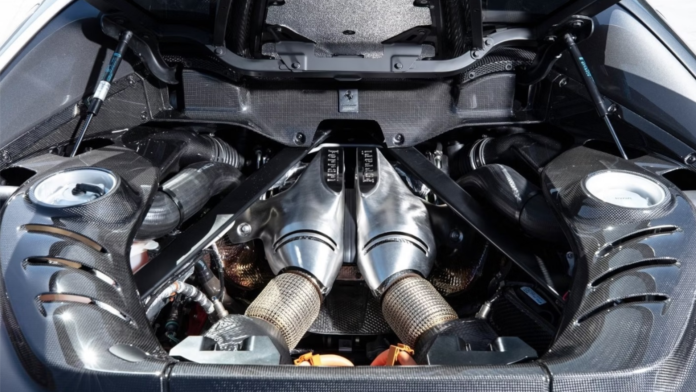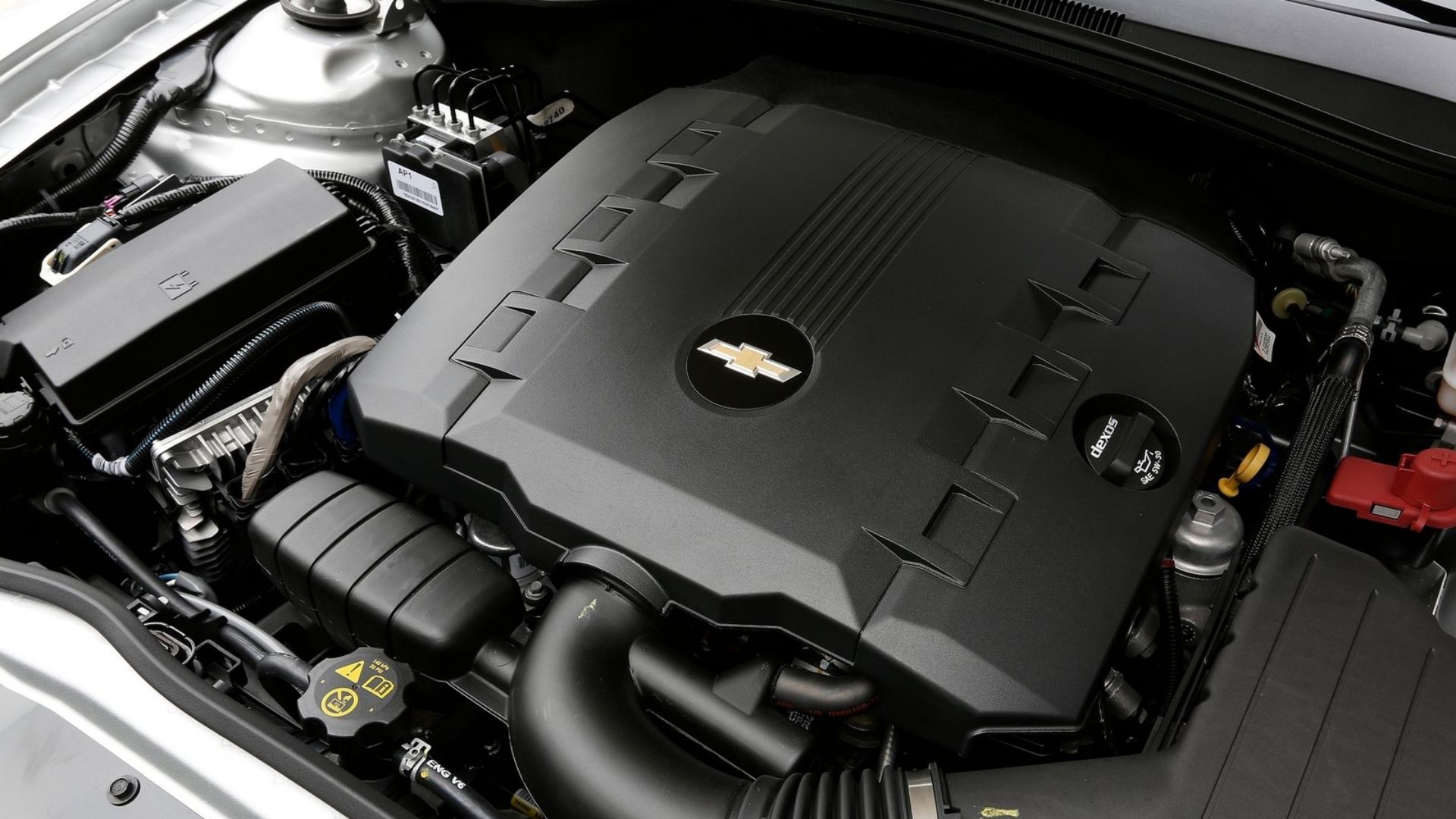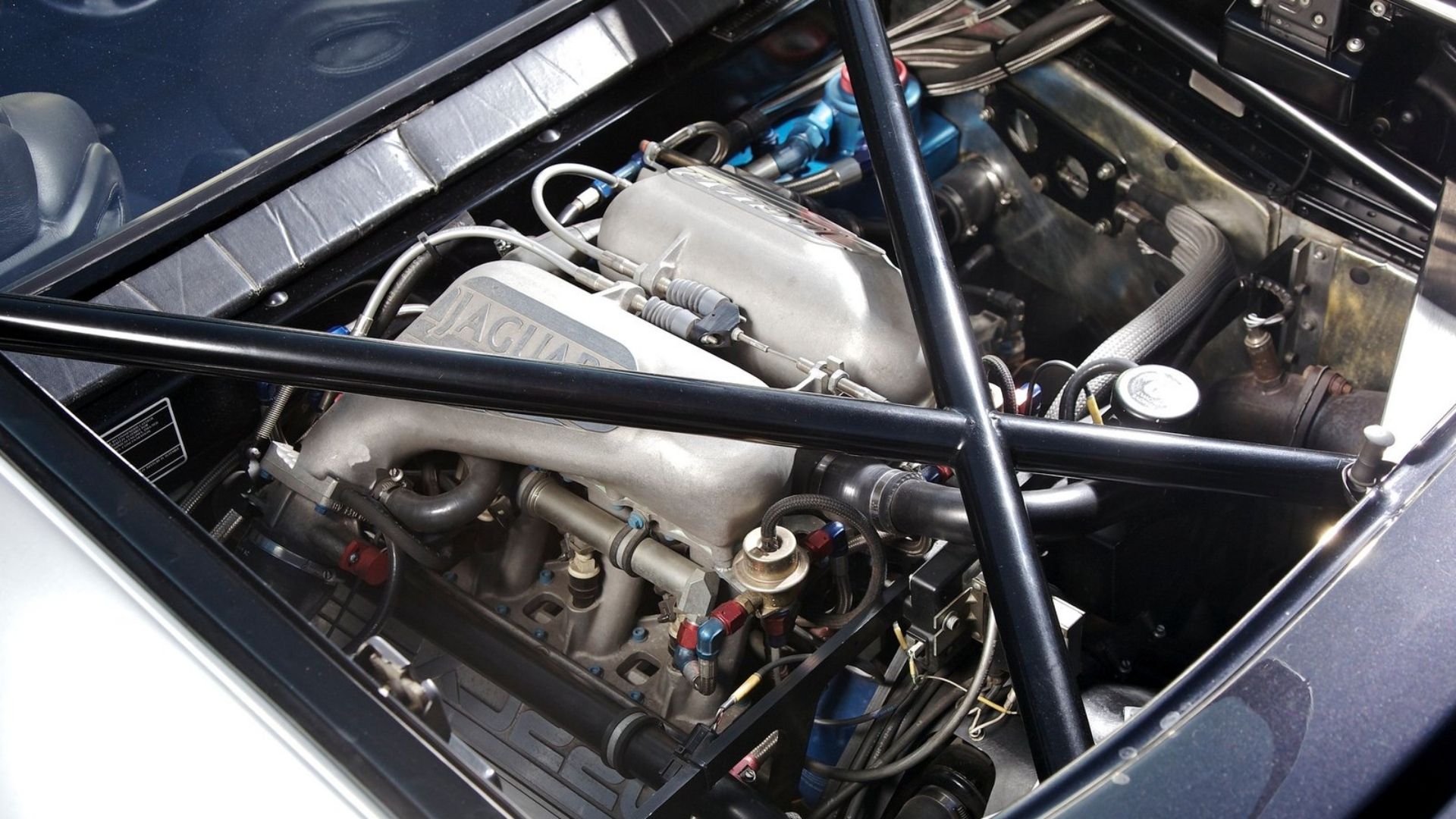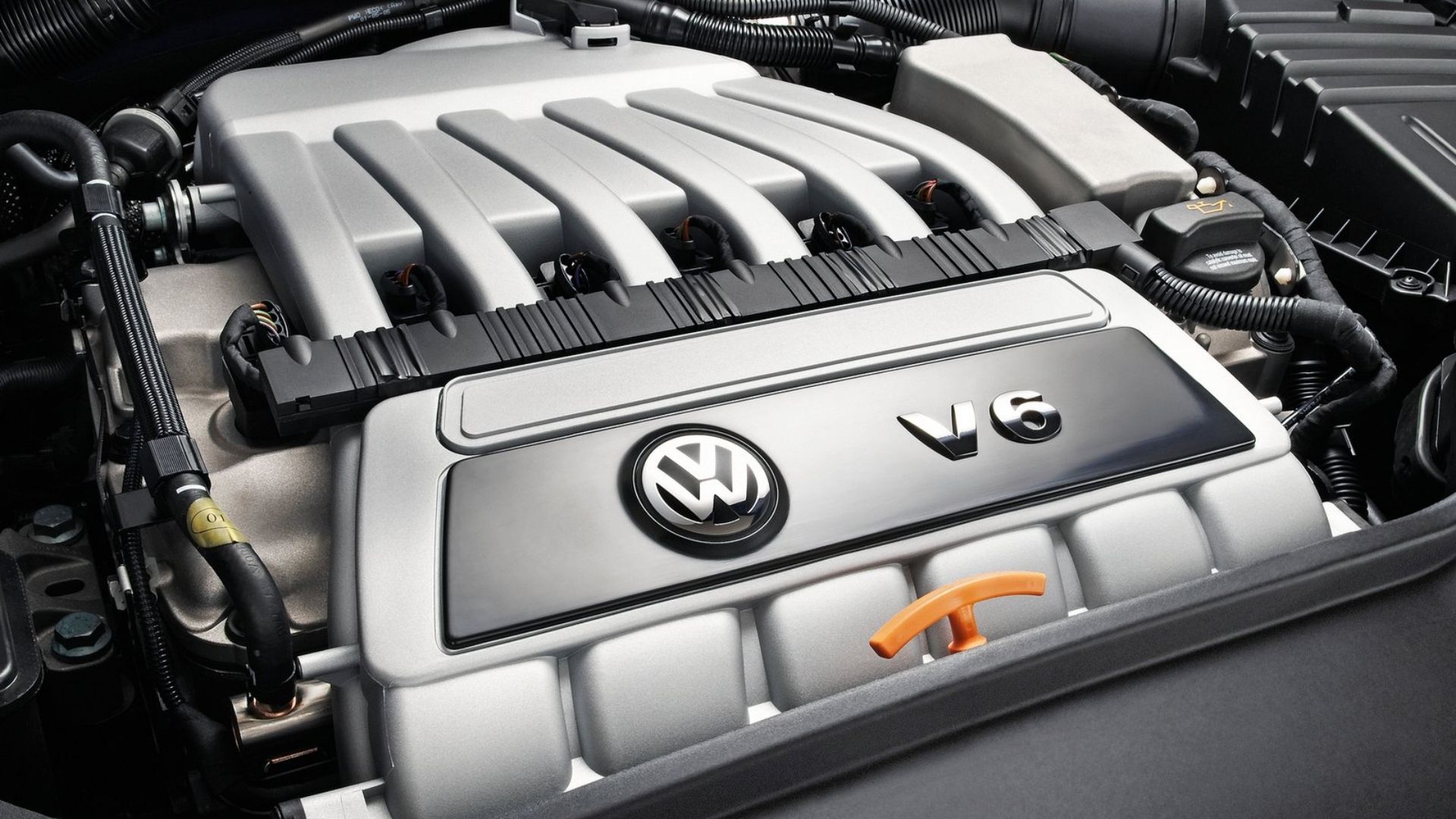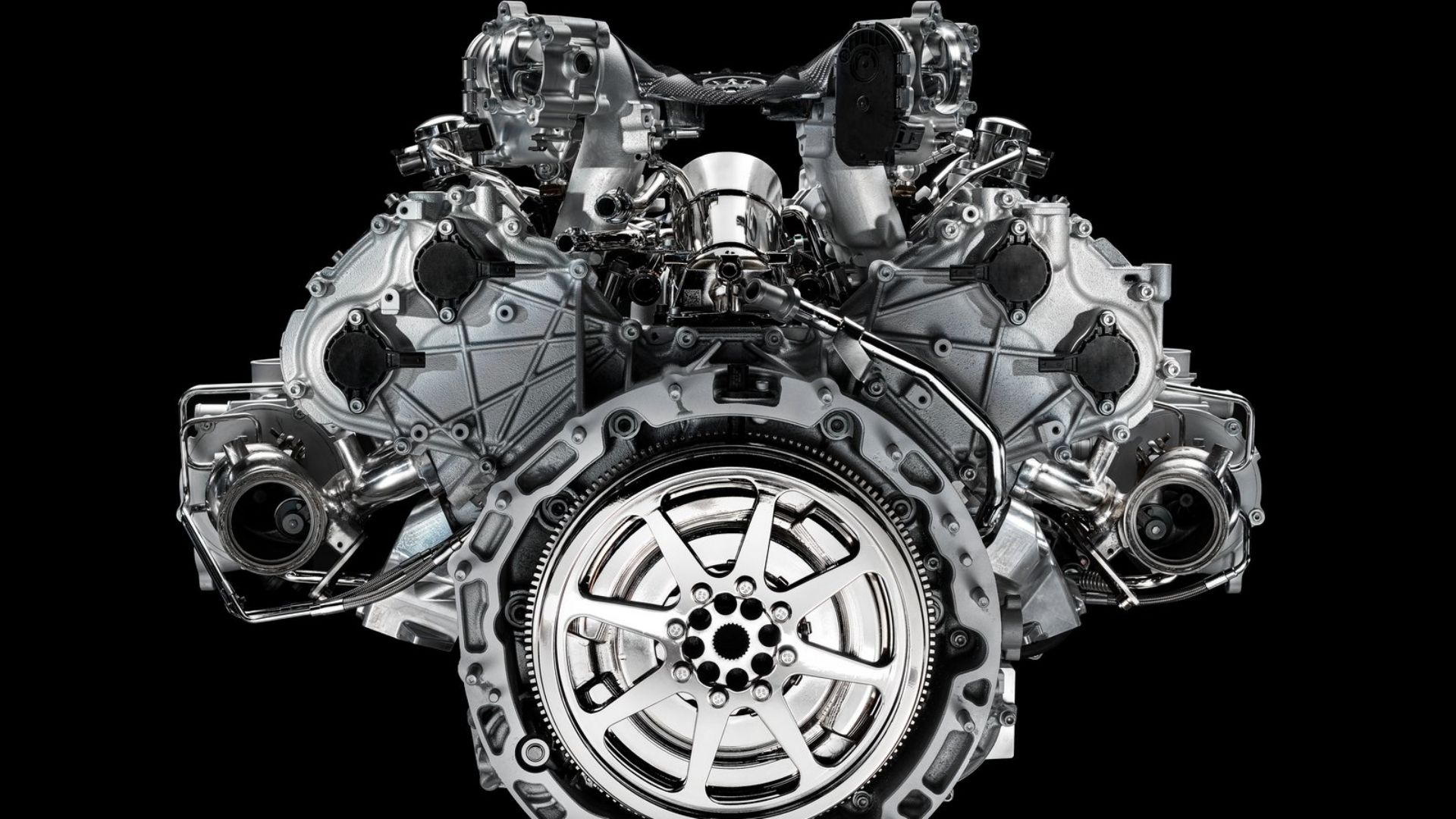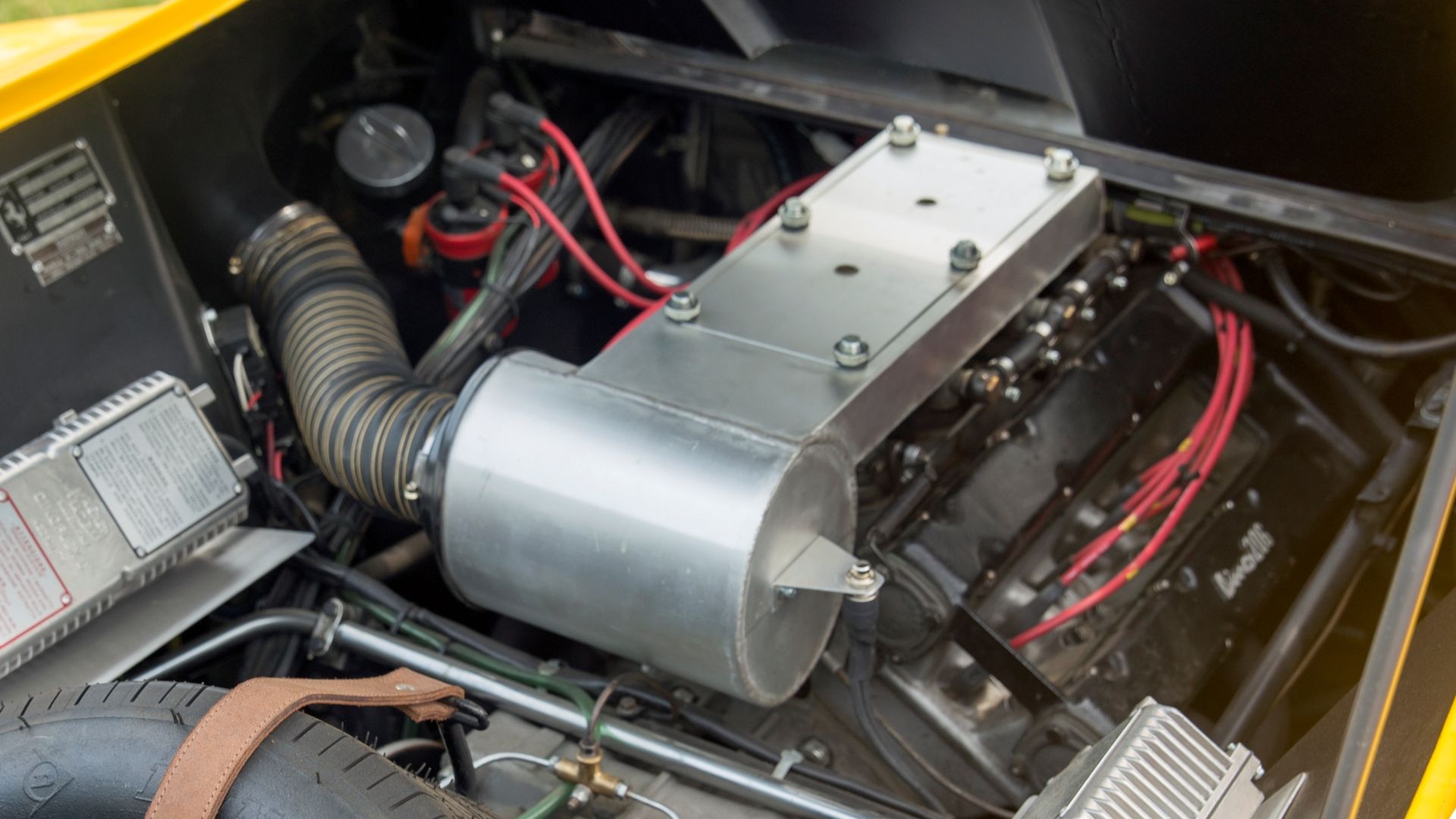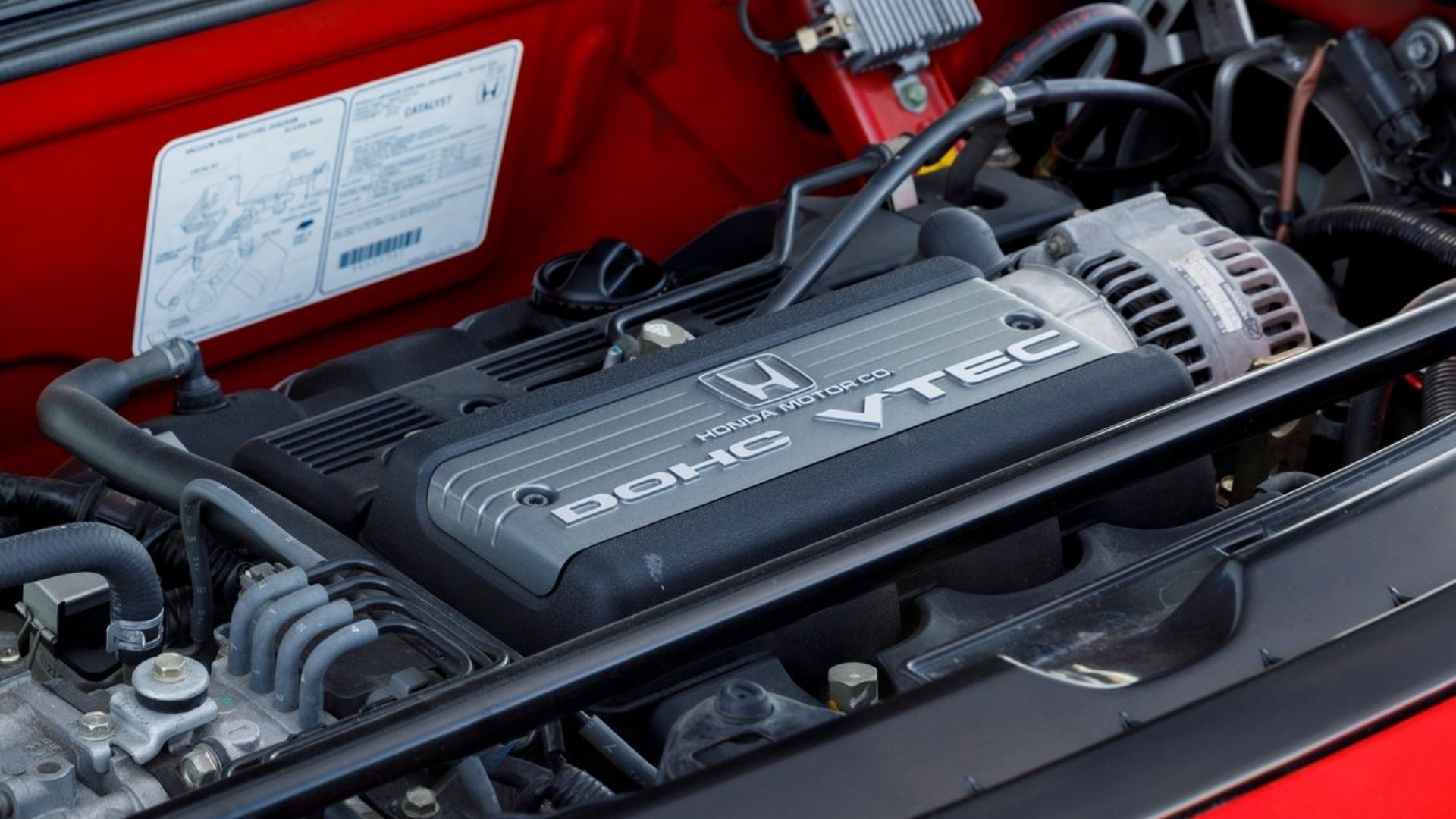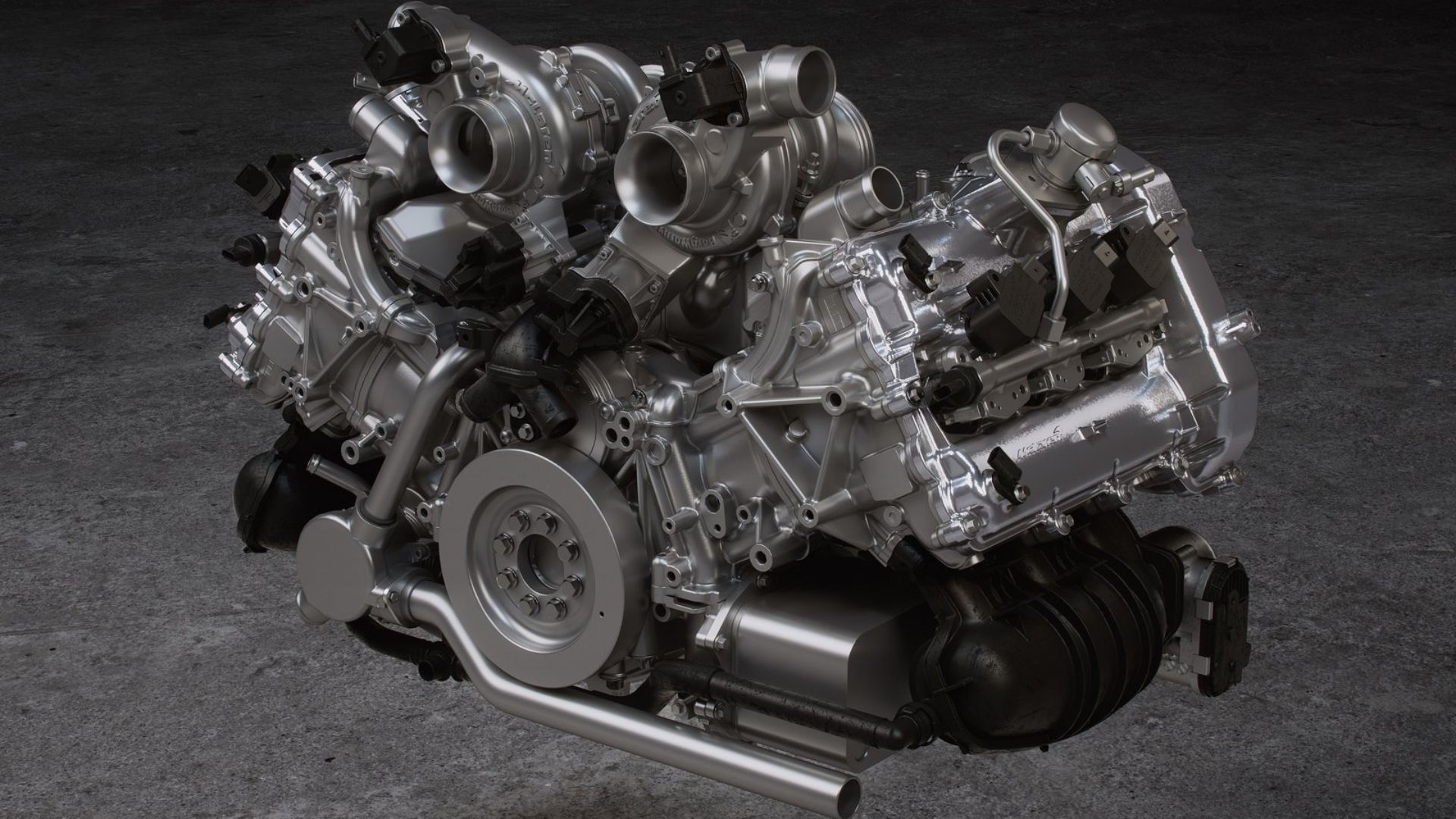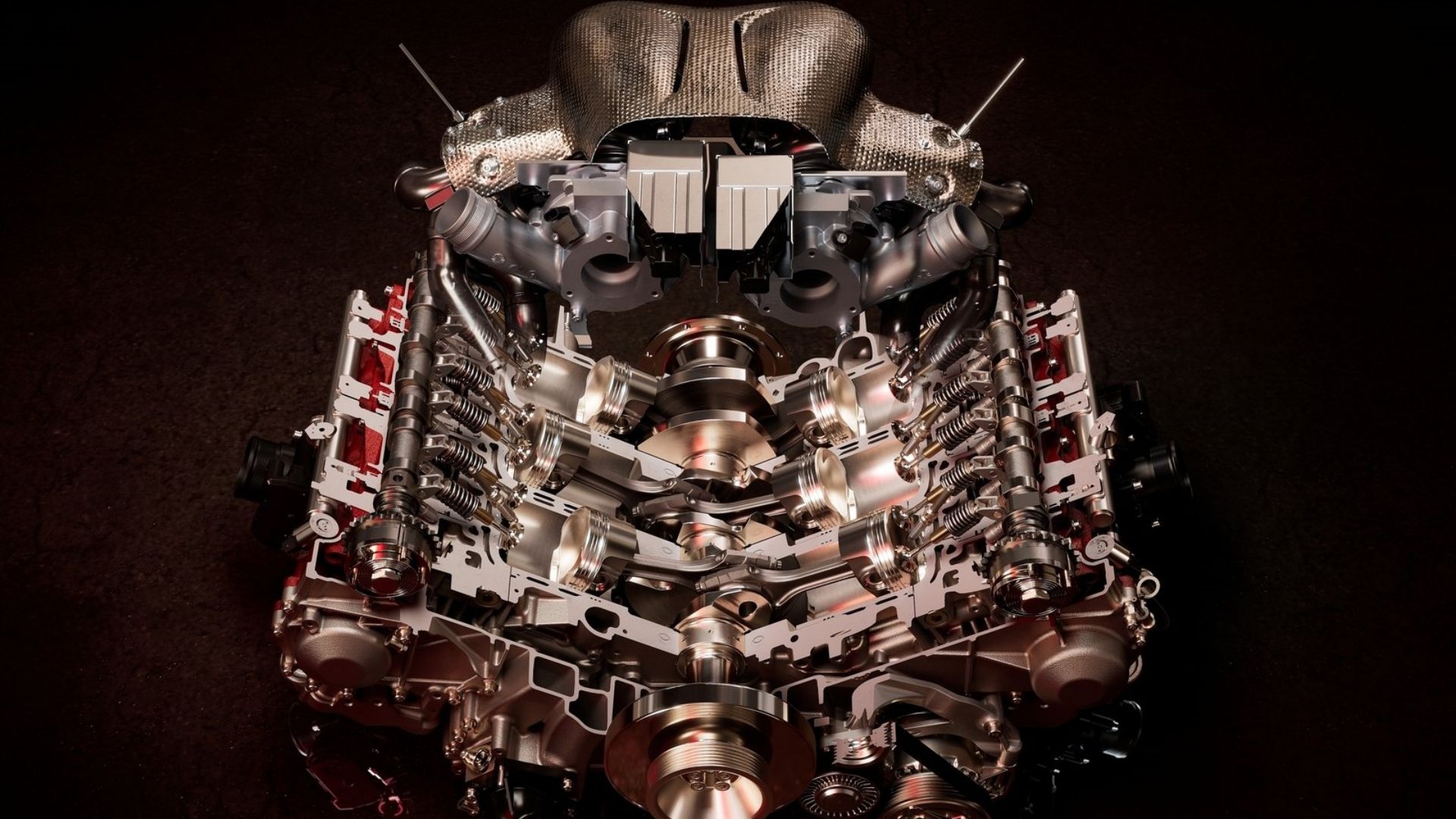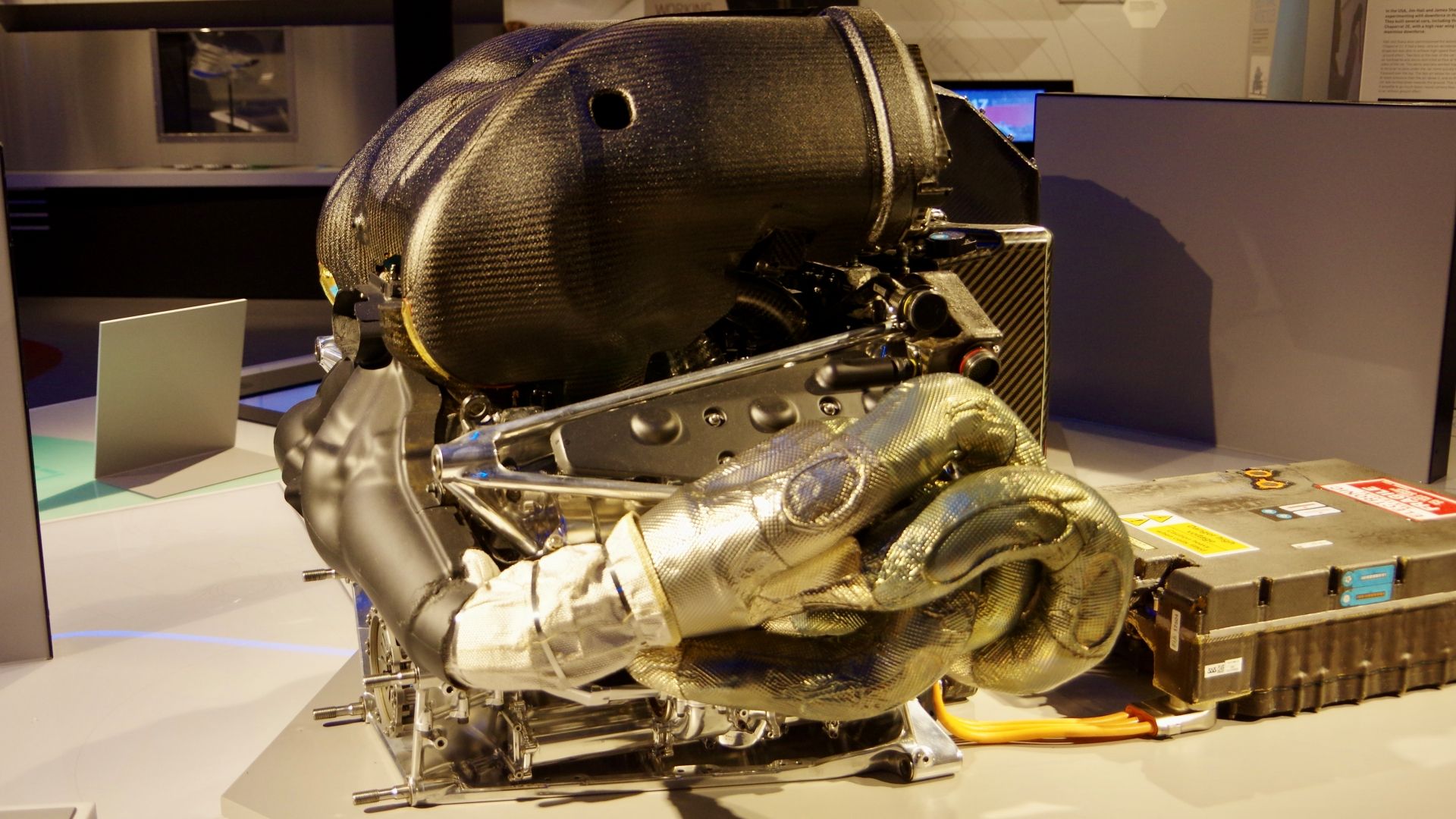Today, V6 engines seem to live under a veil of relative obscurity. They sit between the iconic and sought-after V8 and the tuner-friendly and peppy inline-four engine. Of course, there’s the inline-five, but those aren’t used much these days, apart from the Audi RS 3. In short, nobody thinks much of V6s, other than they’re usually seen in SUVs and some pickup trucks.
However, that line of thinking doesn’t do the V6 any justice, as it’s still capable of great things. It’s used in a few supercars and was once even showcased within the fastest car in the world. It’s also no slouch when it comes to RPMs, as this CarBuzz list aims to shed some light on. Read on below, and we’ll reveal some of the highest-revving V6 engines ever produced.
The following engine specs were taken from Automobile-Catalog.com. Engine histories and applications were sourced from various automotive publications and resources.
10 Nissan 3.5-Liter VR35DDTT: 7,100 RPM
Engine Specs
|
Production Years |
2024-Present |
|---|---|
|
Horsepower |
450 HP |
|
Torque |
516 LB-FT |
|
Popular Application(s) |
Infiniti QX80, Nissan Armada/Patrol |
The first engine on our list is from Nissan, the 3.5-liter VR35DDTT V6. It’s a brand-new motor, having only been produced for less than a year so far. Its only application so far is the Infiniti QX80, but it will also be used in the all-new Nissan Armada, which is moving more upmarket. The VR35DDTT’s job is to replace the long-standing Nissan 5.6-liter V8, which has been around for a couple of decades now. The new V6 can produce 450 horsepower and 516 lb-ft of torque thanks to its twin turbos and dual-overhead camshafts, along with having a rev limit of 7,100 RPM.

Related
5 Reasons To Get Excited About The New Nissan Armada
Infiniti recently launched the all-new QX80, showing us what to expect from the next-generation Nissan Armada.
9 General Motors 3.6-Liter LFX: 7,200 RPM
Engine Specs
|
Production Years |
2012-2019 |
|---|---|
|
Horsepower |
281–321 HP |
|
Torque |
258–275 LB-FT |
|
Popular Application(s) |
Chevrolet Camaro, Chevrolet Colorado/GMC Canyon, Cadillac CTS |
General Motors holds the next spot on our list with the 3.6-liter LFX V6. From 2012 to 1029, the engine saw over a dozen applications across many of GM’s subsidiaries, such as Cadillac, Chevy, GMC, and even Holden. The LFX-coded engine was a high-output version of the GM LLT V6 and featured revised cylinder heads, an intake manifold consisting of composite materials, and an integrated exhaust manifold rather than a standard bolt-on one. The LFX V6 was capable of revving up to 7,200 RPM.

Add CarBuzz to your Google News feed.
8 Jaguar 3.6-Liter JRV-6: 7,200 RPM
Engine Specs
|
Production Years |
1989-1994 |
|---|---|
|
Horsepower |
450–750 HP |
|
Torque |
473–590 LB-FT |
|
Popular Application(s) |
Jaguar XJ220, Jaguar XJR-11 |
At one point in time, Jaguar’s JRV-6 3.6-liter V6 was integral in creating the fastest car in the world, the Jaguar XJ220. The British supercar was able to reach a recorded top speed of 217.1 MPH, a world record, and held that record from 1994 until 1998, when the coveted McLaren F1 beat it with a top speed of 240.1 MPH. The JRV-6 was also used in racing applications, such as the Jaguar XJR-17. However, it was never officially raced due to funding issues. Without any tweaks, the JRV-6 was able to rev up to 7,200 RPM.
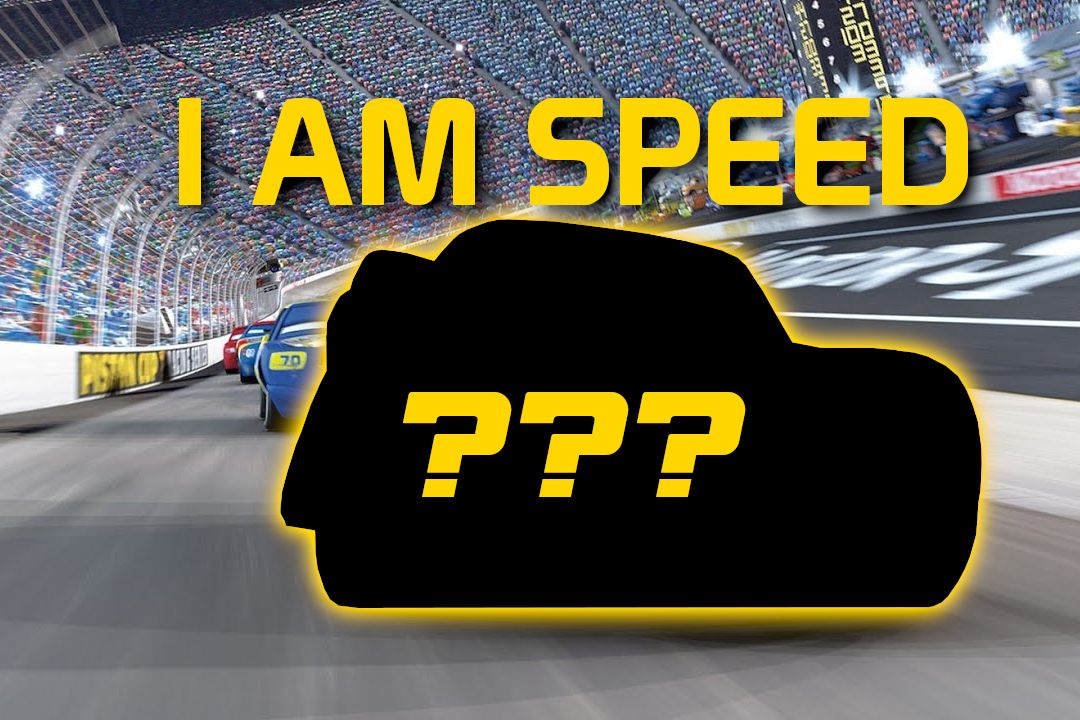
Related
Fastest Car: Who Really Builds The Fastest Street-Legal Production Car?
Everyone makes their own claims, and no one seems to agree. Is it Bugatti? Hennessey? Koenigsegg?
7 Volkswagen Golf MKV R32 3.2-Liter VR6: 7,500 RPM
Engine Specs
|
Production Years |
2005-2009 |
|---|---|
|
Horsepower |
247 HP |
|
Torque |
236 LB-FT |
|
Popular Application(s) |
Volkswagen Golf MKV R32 |
Volkswagen’s quirky VR6 motor has been around in some capacity since 1991. The quirkiness is due to its cylinder orientation, which takes on a shape close to a “W”. However, it is technically considered a V6, so it earns a spot on our list. Despite being produced for 33 years now, the version we’re focusing on is one used in the MKV Golf R32, which was produced from 2005 to 2009. During those years, the 3.2-liter VR6 V6 was able to produce a maximum of 247 horsepower and 236 lb-ft of torque, and could rev all the way up to 7,500 RPM without any modifications.
6 Maserati Nettuno: 8,000 RPM
Engine Specs
|
Production Years |
2021–Present |
|---|---|
|
Horsepower |
621 HP |
|
Torque |
538 LB-FT |
|
Popular Application(s) |
Maserati MC20, GranCabrio |
Maserati earns a spot on our list with their Nettuno 90-degree twin-turbocharged V6. While the Italian carmaker claims the engine is “100% Maserati” in its development and design, it’s extremely close to Ferrari’s F154 V8 and Alfa Romeo’s 690T V6, all of which share things like the firing order and bore size. Regardless, the Nettuno is an impressive unit.
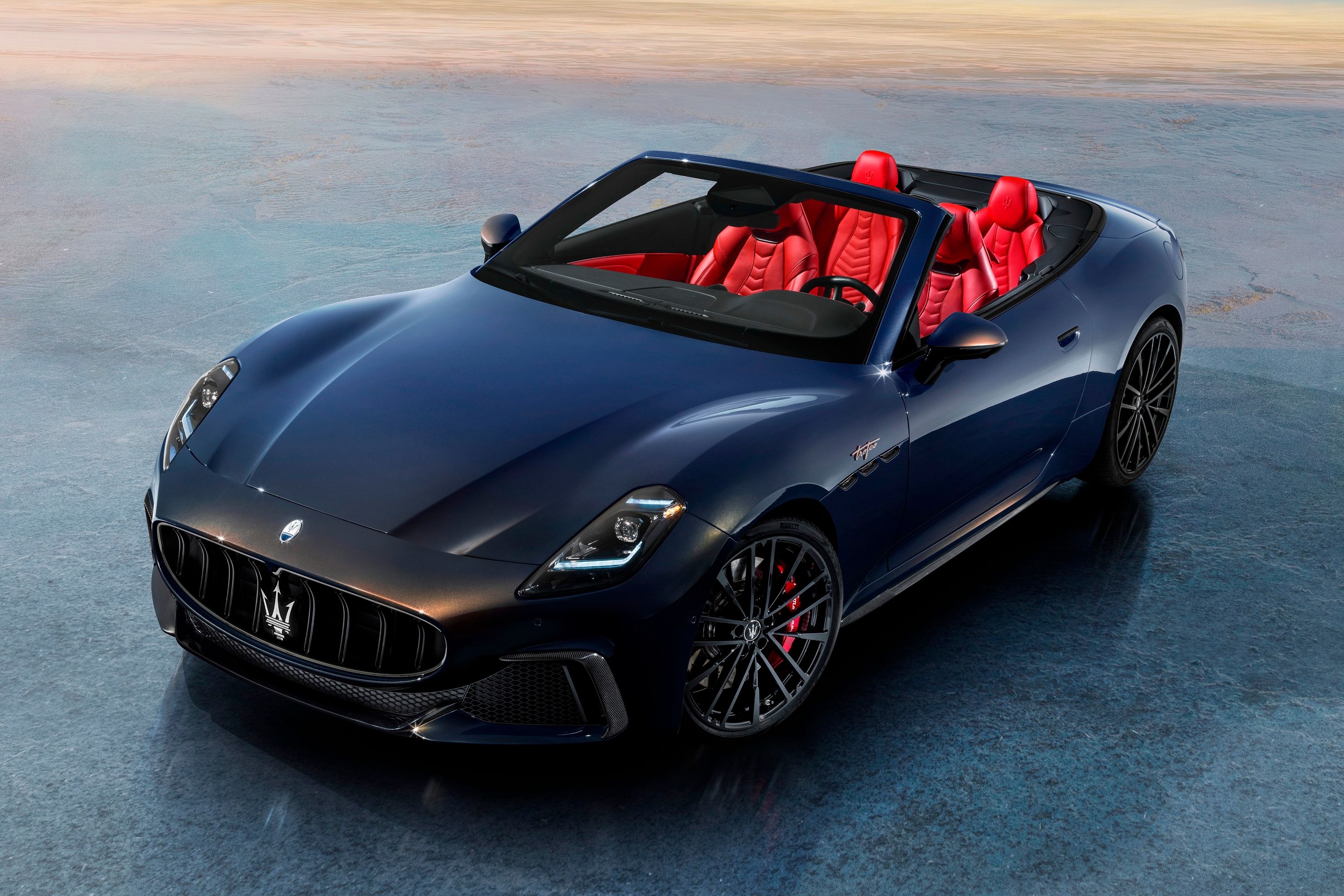
Related
2025 Maserati GranCabrio Trofeo Unveiled With 542-HP V6 And Sexy Italian Styling
The electric Folgore will follow at a later date.
It can produce over 600 horses and over 500 lb-ft of torque, thanks to its twin-turbocharged forced induction and a unique passive pre-combustion chamber. This chamber, in essence, allows the air-fuel mixture to become more volatile and creates a quicker explosion, helping to quicken the speed of the piston’s power stroke.
5 Ferrari 2.0-Liter 65° Dino: 8,000 RPM
Engine Specs
|
Production Years |
1967-1969 |
|---|---|
|
Horsepower |
178 HP |
|
Torque |
138 LB-FT |
|
Popular Application(s) |
Ferrari Dino 206 GT |
Stepping back in time over five decades brings us to our third-highest-revving V6 engine produced: the 2.0-liter 65° Dino V6. Back then, an engine revving up to 8,000 RPM was largely unheard of, especially in a V6. It was, after all, produced by Ferrari, which has always sat near the forefront of European performance. The engine was only installed in one car, the Dino 206 GT, and featured three two-barrel Weber carburetors and a Ferrari-first-ever electronic ignition. Only 152 Dino 206s were built, with the 2.0-liter Dino GT being replaced by the more powerful 2.4-liter Ferrari 246 GT and GTS midway through 1969.
4 Honda 3.0-Liter C30A V6: 8,000 RPM
Engine Specs
|
Production Years |
1991-2005 |
|---|---|
|
Horsepower |
270 HP |
|
Torque |
210 LB-FT |
|
Popular Application(s) |
Honda/Acura NSX |
Our next V6 comes to us from Japan in the Honda 3.0-liter C30A V6. The C30A was used exclusively in Honda’s iconic first-generation NSX sports car. The North American market knows the NSX as being produced by Acura, Honda’s luxury marque. The engine is capable of revving to a maximum of 8,000 RPM thanks to some clever Honda engineering, such as titanium connecting rods, iron-sleeved cylinders, and offset crankshaft pins, which allow for a wider cylinder firing angle without compromising engine balance. It also boasts Honda’s famous VTEC variable valve timing, which kicks in at 4,800 RPM.
3 McLaren M630: 8,500 RPM
|
Production Years |
2021-Present |
|---|---|
|
Horsepower |
571 HP |
|
Torque |
431 LB-FT |
|
Popular Application(s) |
McLaren Artura |
*Power figures do not include combined electric powertrain totals
Next, we have McLaren’s M630 twin-turbocharged V6. It was built for the McLaren Artura and utilizes a unique hybrid-electric powertrain. A world-first, the M630 uses a 120-degree bank angle (the angle at which the pistons operate), the first one seen in any production V6 engine. Ferrari followed soon after with the V6 in the 296. This allows the turbochargers to fit nicely into the “V,” resulting in a more compact engine. McLaren’s V6 is also 110 pounds lighter than its V8, which makes up for the electric components.
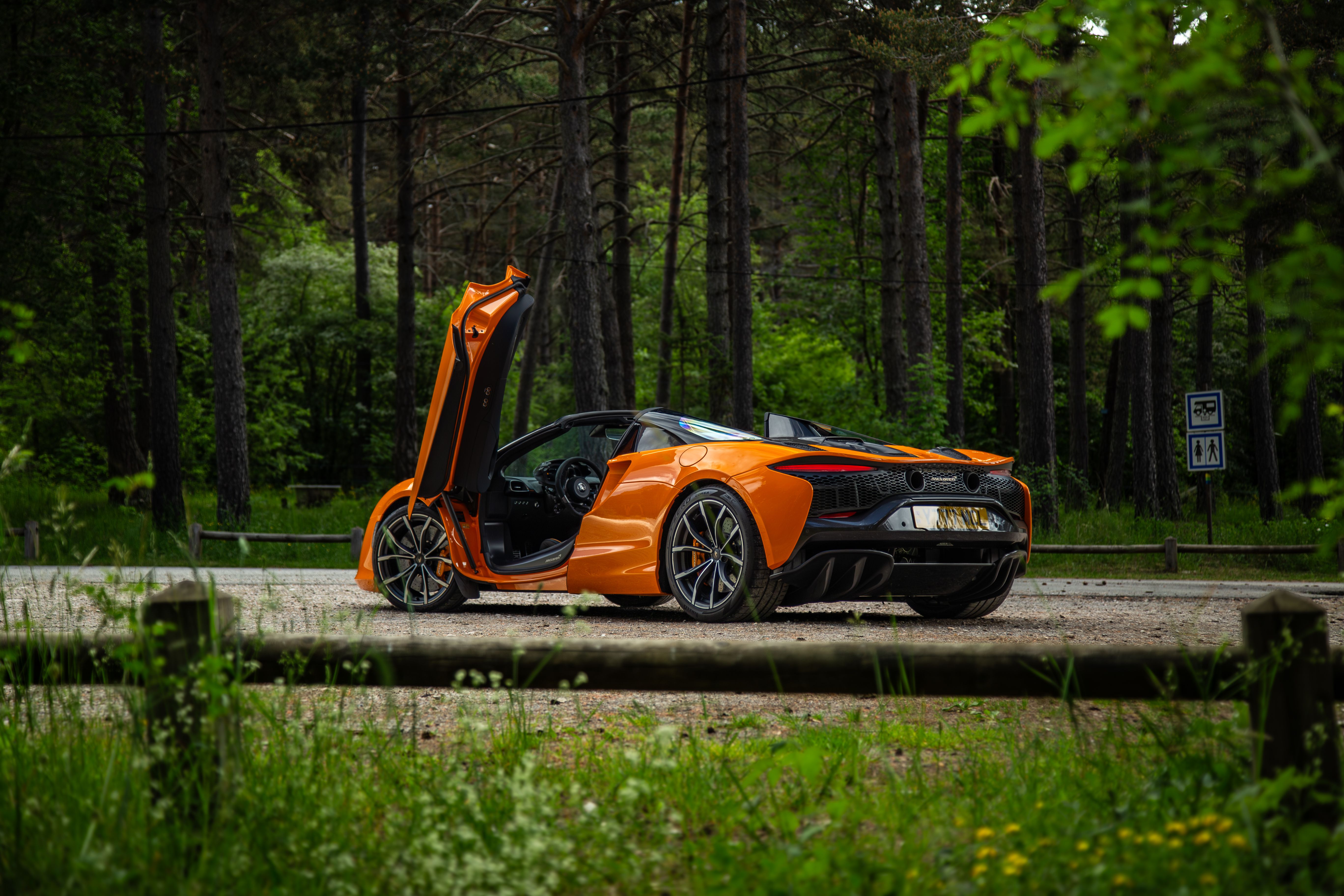
Related
Here Are 6 Things I Loved After Driving The New McLaren Artura Spider (And 3 That I Didn’t)
I drove the McLaren Artura Spider around the Monaco Grand Prix Circuit, and somehow still found something I didn’t like about it.
The M630’s hybrid powertrain consists of a single electric motor, which, when left to its own devices, can produce 94 horsepower and 166 lb-ft of torque. The Artura can drive on electric-only power for 19 miles, and the battery used for the electric motor has a power rating of 7.4 kWh.
2 Ferrari F163 BC: 8,500 PRM
Engine Specs
|
Production Years |
2021–Present |
|---|---|
|
Horsepower |
654 HP |
|
Torque |
546 LB-FT |
|
Popular Application(s) |
Ferrari 296 GTB/GTS |
*Power figures do not include combined electric powertrain totals
Right after McLaren’s V6 comes Ferrari’s F163 BC twin-turbocharged V6. There are a few different F163 variations. However, we’re going to discuss the highest-revving variant, the F163 BC which is found in the Ferrari 296 GTB and the Ferrari 296 GTS. Like the McLaren M630 engine, the F163 features a hybrid powertrain and a 120-degree bank angle. The F163 engine as a whole also carries the honor of being Ferrari’s first twin-turbocharged V6 designed for road use.
The F163 BC’s hybrid powertrain uses a single electric motor which makes 165 horses and 232 lb-ft of torque, powered by a 7.45-kWh battery pack. Ferrari 296 owners can utilize the electric motor for up to 16 miles of electric-only driving.
1 Mercedes-Benz PU106B: 11,000 RPM
Engine Specs
|
Production Years |
2022-Present |
|---|---|
|
Horsepower |
566 HP |
|
Torque |
N/A |
|
Popular Application(s) |
Mercedes-AMG ONE |
*Power figures do not include combined electric powertrain totals
We’ve reached the highest-revving production V6 ever produced. It’s a hybrid Mercedes-Benz unit, carrying the codename PU106B, and is installed in the Mercedes-AMG ONE supercar. The PU106B is a lightly modified version of the Mercedes F1 W06 Hybrid Formula One engine, meaning the PU106B is capable of some seriously impressive stats. It’s able to produce 1,049 horsepower with the help of four electric motors and an electronic turbocharger. Torque figures are unknown due to the complexity of measuring them across the five power plants. The bottom line is the PU106B can rev up to a screaming 11,000 RPM.
The Mercedes-AMG One might be the ultimate engineering feat of the last decade. Equipping a supercar with an F1 engine is not as easy as it sounds, as the latter idles at 5,000 rpm. AMG had to overcome multiple obstacles to make the 1.5-liter engine work in a supercar, but somehow, it managed to pull it off. Don’t expect to see anything like it ever again.
Sources: Automobile-Catalog.com, Supercars.net

